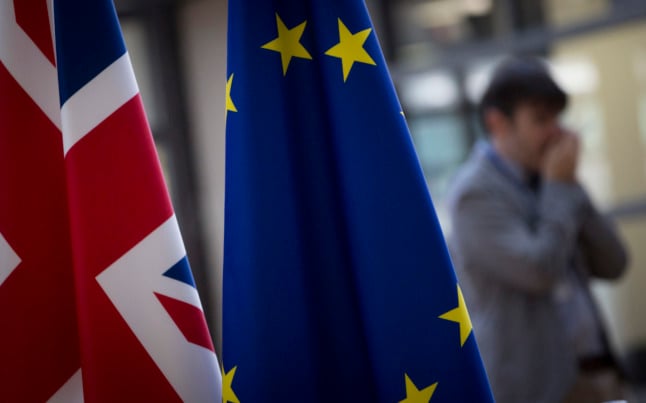How many applications has Sweden rejected?
The Swedish Migration Agency received 12,700 applications for post-Brexit residence status before the December 31st deadline. Of these, 9,900 had been concluded by January 24th 2022, when the European Commission’s report was published.
Of the 9,900 concluded applications, 1,100 were rejected (figures are rounded to the nearest 100 except for numbers below 500). This represents a rejection rate of just over 11 percent. This includes 149 applications which were rejected as being incomplete.
It is not clear as to whether this figure includes duplicate applications or rejected applicants who reapplied at a later date and were successful.
“We don’t know anything about whether the figure given includes people who successfully reapplied at a second attempt. I would presume not, as people who were refused would appeal, not apply again, so I’m not sure why there would be a second application,” Jane Golding, chair of British in Europe, an organisation working for the rights of Brits in Europe, told The Local.
“There is a note that says that incomplete applications are included in the total number of refusals, but what that means is not clear. And there is no note saying that the successful applications include second attempts. We only know what it says in the table. Only France mentions duplicates i.e. where people have made the same application twice. There is no note about duplicates in Sweden,” Golding continued.
How does this compare with other countries?
EU countries could choose whether to grant post-Brexit residence status under a constitutive system (applicants had to apply directly to government agencies to be awarded residence status), or a declaratory system (applicants’ rights were not dependent on a government decision).
Sweden chose to grant post-Brexit residence rights under a constitutive system.
Other countries using this system who reported a similar number of concluded applications are Belgium (9,600) and Malta (10,600). These countries rejected 131 and 40 applications respectively, giving them a rejection rate of 1.3 percent (Belgium) and 0.4 percent (Malta). The highest percentage of rejections after Sweden was reported by France, who had concluded 164,900 applications, of which 3,500 were rejected, giving them a rejection rate of 2.1 percent. The majority of countries who chose to use a constitutive system rejected less than one percent of applications.
Among countries who chose to use a declaratory system, the highest rate of rejection was in Ireland, who rejected 117 of 2,000 concluded applications (5.8 percent). The next-highest rate of rejection was in Poland, who rejected 3.1 percent of applications (107 of a total of 3,400) then Spain, who rejected 3,400 of 180,000 applications (1.8 percent), followed by Czechia, who rejected 22 of 1,800 applications (1.2 percent). All other countries in this group rejected less than one percent of applications.
These figures do not include applications withdrawn by the applicant, incomplete applications, or applications which are otherwise void.
READ ALSO: How many Britons in EU acquired post-Brexit residency and how many were refused?
Why were applications rejected?
Rejected applications are described in the report as “outside the personal scope or negative criminality check”.
“Outside the personal scope” in this context refers to those who are not covered by the Withdrawal Agreement – this could, for example, include those who moved to their host country for the first time after December 31st 2020.
Other reasons for rejection could be those who do not fulfil criteria to be classed as legally resident in their host country under the Withdrawal Agreement. This could, for example, cover those who were not employed, self-employed, self-sufficient, students or jobseekers in the first five years of residence in their host country.
“Negative criminality check” refers to clauses in the Withdrawal Agreement allowing member states to restrict right of residence if an individual’s personal conduct “poses a genuine, present and sufficiently serious threat to public policy or public security”, British in Europe explain.
The Local contacted the Swedish Migration Agency, responsible for processing applications for post-Brexit residence status, for comment on the high proportion of rejected applications, and received this response:
“The agency are aware of the issue. A large amount of cases which were rejected are those where the Migration Agency tried to contact the applicant for more details, without success,” a press officer said.
“If an application has been received and we have requested further details or tried to reach the applicant in another way but not received a response, the Migration Agency must reject the case according to administrative law. Another reason [for the high number of rejections] could be that different member states handle incorrect applications in different ways.”
“The Migration Agency reject incorrect applications and advise the applicant to apply on other grounds in cases where they have potential residence in another way (as a family member, worker etc.)”.
According to European Commission figures, 149 cases out of the 1100 total rejected cases were marked as “incomplete”. The Local has contacted the Migration Agency for clarification on possible reasons behind the 951 cases not included in this figure.
What can I do if my application was rejected?
If your application was rejected and you believe that you should have been granted residence status, you can launch an appeal to the Migration Agency. Your letter from the Migration Agency informing you that your application was rejected should include information on the deadline for launching an appeal, as well as what your appeal letter should include and who you should sent it to.
If you choose to appeal the Migration Agency’s rejection, they will consider whether they should change their decision, and if they do so, their new decision will be sent to the Migration Court. The Migration Court will then decide whether to approve the Migration Agency’s new decision.
Note that you cannot appeal a rejection after you have accepted it and signed a declaration of acceptance, or if the deadline for appeal has passed.



 Please whitelist us to continue reading.
Please whitelist us to continue reading.
Member comments